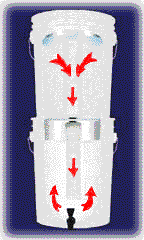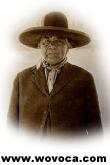|
||||||||||||||||||
Press CTRL+D to bookmark this page! |
||||||||||||||||||
 |
||||||||||||||||||
| Click here for
EarthMotherCrying Wallpaper |
||||||||||||||||||
LEGEND of Joan the Pope |
||||||||||||||||||
|
||||||||||||||||||
|
||||||||||||||||||
|
|
||||||||||||||||||
|
||||||||||||||||||
|
||||||||||||||||||
|
||||||||||||||||||
|
||||||||||||||||||
Excerpted from the Author's Notes section of Pope Joan: A Novel by Donna Woolfolk Cross]
the very bottom of things, that you will find history." (Vallet de Viriville) Pope Joan is one of the most fascinating, extraordinary characters in Western history -- and one of the least well known. Most people have never heard of Joan the Pope, and those who have regard her story as legend. Yet for hundreds of years -- up to the middle of the seventeenth century -- Joan’s papacy was universally known and accepted as truth. In the seventeenth century, the Catholic Church, under increasing attack from rising Protestantism, began a concerted effort to destroy the embarrassing historical records on Joan. Hundreds of manuscripts and books were seized by the Vatican. Joan’s virtual disappearance from modern consciousness attests to the effectiveness of these measures. Today the Catholic Church offers two principal arguments against Joan’s papacy: the absence of any reference to her in contemporary documents, and the lack of a sufficient period of time for her papacy to have taken place between the end of the reign of her predecessor, Leo IV, and the beginning of the reign of her successor, Benedict III. These arguments are not, however, conclusive. It is scarcely surprising that Joan does not appear in contemporary records, given the time and energy the Church has, by its own admission, devoted to expunging her from them. The fact that she lived in the ninth century, the darkest of the dark ages, would have made the job of obliterating her papacy easy. The ninth century was a time of widespread illiteracy, marked by an extraordinary dearth of record keeping. Today, scholarly research into the period relies on scattered, incomplete, contradictory, and unreliable documents. There are no court records, land surveys, farming accounts, or diaries of daily life. Except for one questionable history, the Liber pontificalis (which scholars have called a "propagandist document"), there is no continuous record of the ninth-century Popes -- who they were, when the reigned, what they did. Apart from the Liber pontificalis, scarcely a mention can be found of Joan’s successor, Pope Benedict III -- and he was not the target of an extermination campaign. Joan’s absence from contemporary church records is only to be expected. The Roman clergymen of the day, appalled by the great deception visited upon them, would have gone to great lengths to bury all written reports of the embarrassing episode. Indeed, they would have felt it their duty to do so. Even the great theologian Alcuin was not above tampering with the truth; in one of his letters he admits destroying a report on Pope Leo III’s adultery and simony. One need only look to the recent examples of Nicaragua and El Salvador to see how a determined and well-coordinated state effort can make embarrassing evidence "disappear." It is only after the distancing effect of time that truth, kept alive by unquenchable popular report, gradually begins to emerge. And, indeed, there is no shortage of documentation for Joan’s papacy in later centuries. Frederick Spanheim, the learned German historian who conducted and extensive study of the matter, cites no fewer than five hundred ancient manuscripts containing accounts of Joan’s papacy, including those of such acclaimed authors as Petrarch and Boccaccio. Today, the church position on Joan is that she was an invention of Protestant reformers eager to expose papist corruption. Yet Joan’s story first appeared hundreds of years before Martin Luther was born. Most of her chroniclers were Catholics, often highly placed in the church hierarchy. Joan’s story was accepted even in official histories dedicated to Popes. Her statue stood undisputed alongside those of the other Popes in the Cathedral of Siena until 1601, when, by command of Pope Clement VIII, it suddenly "metamorphosed" into a bust of Pope Zacharias. In 1276, after ordering a thorough search of the papal records, Pope John XX changed his title to John XXI in official recognition of Joan’s reign as Pope John VIII. Joan’s story was included in the official church guidebook to Rome used by pilgrims for over three hundred years. Another striking piece of historical evidence is found in the well-documented 1413 trial of Jan Hus for heresy. Hus was condemned for preaching the heretical doctrine that the Pope is fallible. In his defense Hus cited, during the trial, many examples of Popes who had sinned and committed crimes against the Church. To each of these charges his judges, all churchmen, replied in minute detail, denying Hus’s accusations and labeling them blasphemy. Only one of Hus’s statements went unchallenged: "Many times have the Popes fallen into sin and error, for instance when Joan was elected Pope, who was a woman." No one of the 28 cardinals, four patriarchs, 30 metropolitans, 206 bishops, and 440 theologians present charged Hus with lying or blaspheming in this statement. There is also circumstantial evidence difficult to explain if there was never a female Pope. One example is the so-called chair exam, part of the medieval papal consecration ceremony for almost six hundred years. Each newly elected Pope after Joan sat on the sella stercoraria (literally, "dung seat"), pierced in the middle like a toilet, where his genitals were examined to give proof of his manhood. Afterward the examiner solemnly informed the gathered people, "Mas nobis nominus est" -- "Our nominee is a man." Only then was the Pope handed the keys of St. Peter. This ceremony continued until the sixteenth century. Another interesting piece of circumstantial evidence is the "shunned street." The Patriarchium, the Pope’s residence and episcopal cathedral (now St. John Lateran) is located on the opposite side of Rome from St. Peter’s Basilica; papal processions therefore frequently traveled between them. A quick perusal of any map of Rome will show that the Via Sacra (now the Via S. Giovanni) is by far the shortest and most direct route between these two locations -- and so in fact it was used for centuries (hence the name Via Sacra, or "sacred road"). This is the street on which Joan reportedly gave birth to her stillborn child. Soon afterward, papal processions deliberately began to turn aside from the Via Sacra. As for the Church’s second argument, that there was not sufficient time between the papacies of Leo IV and Benedict III for Joan to have reigned -- this too is questionable. The Liber pontificalis is notoriously inaccurate with regard to the times of papal accessions and deaths; many of the dates cited are known to be wholly invented. Given the strong motivation of a contemporary chronicler to conceal Joan’s papacy, it would be no great surprise if the date of Leo’s death was moved forward from 853 to 855 -- through the time of Joan’s reported two-year reign -- in order to make it appear that Pope Leo was immediately succeeded by Pope Benedict III.
Further Reading and Videos
Pope
Joan: A Novel
Pope
Joan
The
Legend of Pope Joan: In Search of the Truth
World
of the Goddess
When
God Was a Woman
Brave
Dames and Wimpets
The
Creation of Patriarchy
Mismeasure
of Woman
The
Chalice and the Blade
For
Her Own Good
The
Language of the Goddess Goddesses and Gods of Old Europe
|
||||||||||||||||||
|
||||||||||||||||||
Shapeshift to WOVOCA! to view this site's main page |
||||||||||||||||||
|
||||||||||||||||||
|
||||||||||||||||||
|
||||||||||||||||||
|
||||||||||||||||||
|
||||||||||||||||||










![[Image]](pict41.jpg)
![[Image]](pict43.jpg)